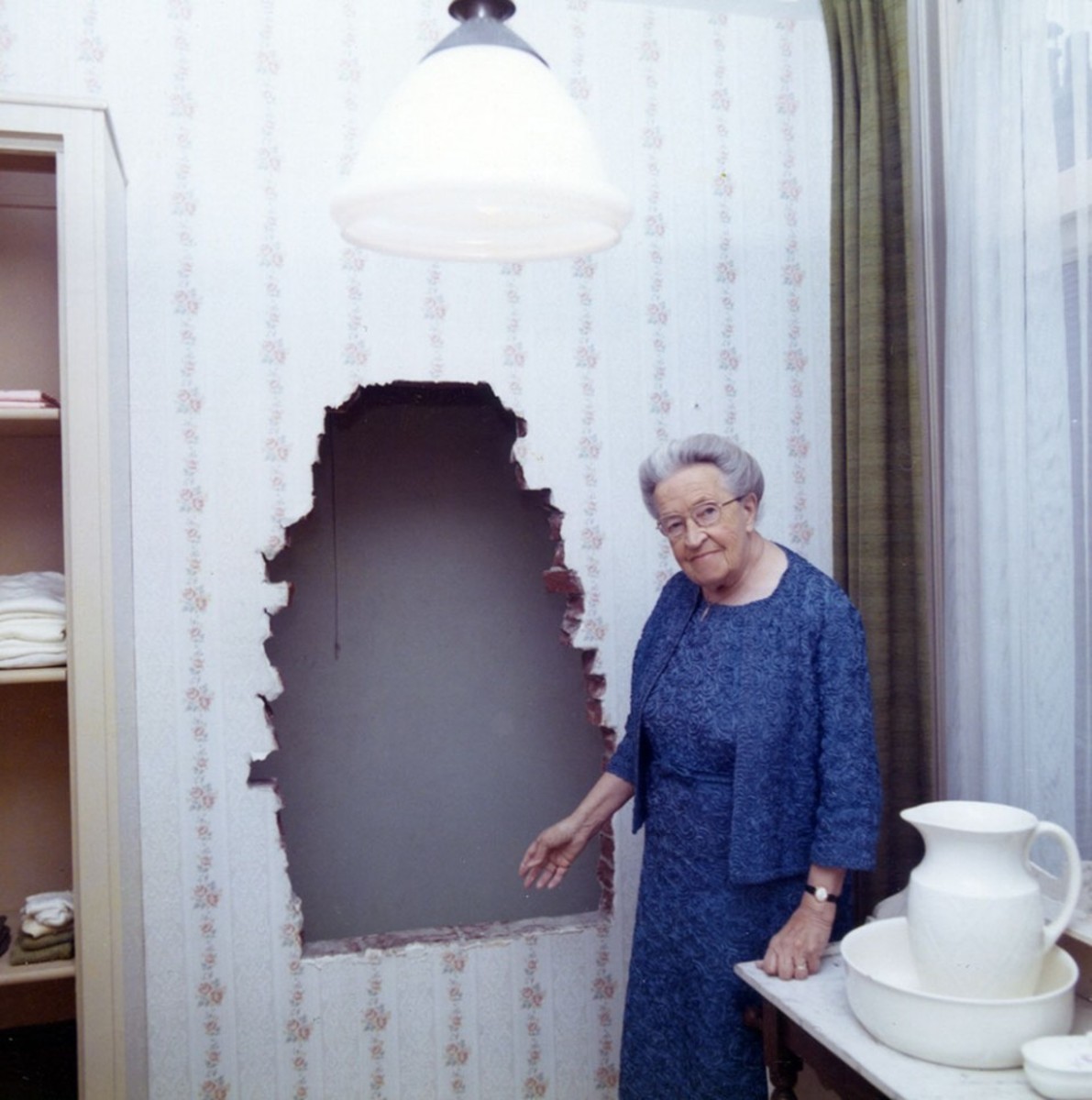Table Of Content

As you can see the area behind the fake wall is so narrow and one can hardly move there let alone sleep. The ten Boom’s had 6 – 7 people hiding out in this space at any given time (around 4 Jews and 2 members of the Dutch underground who were opposing the regime). The Corrie ten Boom Museum is situated in a sidestreet, 19 Barteljorisstraat, just off one of the main streets in Haarlem. The history of the house dates back to 1837 when Willem ten Boom opened a watchmaking store on the bottom level with family members living in the rooms on top. The house was passed down to Willem’s son Casper, and then to his daughter, Corrie. The camp administration released Corrie ten Boom in late December 1944.
The museum
The Gestapo ultimately arrested 30 people who had been in the ten Boom home that day. Eventually, they sent everyone home — except for Casper, Betsie, and Corrie ten Boom. “In this household, God’s people are always welcome,” Casper ten Boom said. Over a stretch of seven days in May 1940, everything changed for Corrie ten Boom and her family. Alongside work with her father, ten Boom also enrolled in school to become a watchmaker. In 1922, she became the first licensed female watchmaker in Holland.
information for visitors
'Return to Hiding Place,' filmed in West Michigan, could have Holland premier - HollandSentinel.com
'Return to Hiding Place,' filmed in West Michigan, could have Holland premier.
Posted: Thu, 24 Apr 2014 07:00:00 GMT [source]
Although Betsie and Corrie were able to find solace in their faith during their time in the camps, Betsie became ill at Ravensbrück. After a search of the house and an interrogation of the family, Corrie, Bestie, and Casper were arrested — the Gestapo never found the Jews hiding in the secret room. After her mother’s death and a failed romance, ten Boom decided that she wanted to follow in her father’s footsteps. “I was finding a joy in work I’d never dreamed of,” ten Boom wrote. She had long helped her father with the administration of his shop, but now decided she wanted to learn the mechanics of watch repair itself. My name is Janiel, I specialize in solo female travel, cultural connections, sustainable adventures, food and history to help make your travel experiences fun, meaningful, and delicious.
Corrie ten Boom House - The Hiding Place Reviews
Casper ten Boom became sick in prison and died in a hospital corridor only ten days after the arrest. The sisters remained in the Scheveningen prison until June 1944, when officials transferred them to an internment camp at Vught, in the Netherlands. In September 1944, the Nazis deported Corrie and Betsie ten Boom to the Ravensbrück concentration camp in Germany. In Ravensbrück, the sisters managed to stay together until Betsie died that December. The Ten Boom family ran a watch shop (horlogerie) on the corner of an alleyway and the main shopping street of Haarlem, the Netherlands. During the Nazi occupation of Haarlem starting in 1942, they provided safe harbour for Jews and other underground refugees in a hiding place they built upstairs.
Reservations
Due to a stroke of extraordinary luck — a clerical error — Corrie ten Boom was released 12 days after her sister’s death. After ten Boom left, all the women in her age group were sent to the gas chamber. The room was no larger than a closet but could hold about six people. It had a crude ventilation system so they could get fresh air. The ten Booms also installed a buzzer in the house in order to quickly alert anyone there to hide during security sweeps.
Corrie ten Boom HouseMore than a museum

My experience in travel, and my personal story have allowed me to get published in Fodor's Travel, Atlas Obscura, Metro.co.uk, Trip Advisor, and multiple Podcast interviews. You can find me on pretty much every social media channel YouTube, Instagram, Twitter, Facebook, Pinterest, TikTok. If you are a brand and would like to work with me, click here. Make a Donation to the Corrie Ten Boom - The Hiding Place Museum, and help them continue to operate this house and spread the message of forgiveness and love to all who enter. We were taken upstairs and told of how there was a bell in the kitchen downstairs that would be pressed, and only the people there for hiding could hear it.

When Heaven came to Hell - https://www.israeltoday.co.il/
When Heaven came to Hell.
Posted: Fri, 17 Nov 2023 08:00:00 GMT [source]
If you know me personally, then you probably know how much I read. (I average at least 1 book per week.) I like to read the Bible in the morning over breakfast. I’ll read a missionary biography in the afternoon or over lunch.
Corrie ten Boom House - The Hiding Place
On February 28, 1944, a Dutch informant told the Nazis of the ten Booms’ activities, and the Gestapo soon raided the home. They kept the house under surveillance, and by the end of the day, 35 people—including the entire ten Boom family—were arrested. Although German soldiers thoroughly searched the house, they didn’t find the half-dozen Jews safely concealed in the hiding place. The six stayed in the cramped space for nearly three days before being rescued by the Dutch underground.
Their home was actually two different buildings with varying ceiling heights, oddly joined together with a quirky spiral staircase—the perfect home for secret compartments. The family were arrested and taken away to be interrogated and the Gestapo, unable to find any secret hideaways, remained in the home waiting for two days. More and more people started coming to the ten Boom’s home seeking help from the family. Eventually a false wall in Corrie’s bedroom on the top floor was put in, with the help of the Dutch underground movement. In the next 30 years, Corrie ten Boom spent her life spreading that message. She traveled to over 60 countries to speak about the power of forgiveness.
It is also not possible to visit the museum with a guide dog. The Museum Shop has a large variety of books about Corrie or written by her, both in Dutch and several foreign languages, including English. In addition, the shop also sells radio speeches, the Hiding Place DVD and an animated DVD for children. Our Museum Book "More Than a Hiding Place", written by Emily S. Smith, is the most complete book about Corrie and her family.
A brick wall had been built providing just enough room for ten refugees to stand upright in this small space, for as long as it took to let the danger pass. Nothing was allowed in this small space so as not to attract rodents, and give away the Hiding Place. The area was not insulated from the bitter cold winters, so being trapped in this place was not ideal. The Museum Times is run by journalist and travel blogger Elizabeth Joss (). The website aims to provide increased visibility to smaller, lesser-known museums that usually do not get as much visibility due to lack of funds. Museums mentioned are spread across the world and are true gems worth talking about.
The façade of the watch shop made the house an ideal front for these activities. A secret room, no larger than a small wardrobe closet, was built into Corrie’s bedroom behind a false wall. The space could hold up to six people, all of whom had to stand quiet and still. A crude ventilation system was installed to provide air for the occupants. When security sweeps came through the neighborhood, a buzzer in the house would signal danger, allowing the refugees a little over a minute to seek sanctuary in the hiding place.

No comments:
Post a Comment